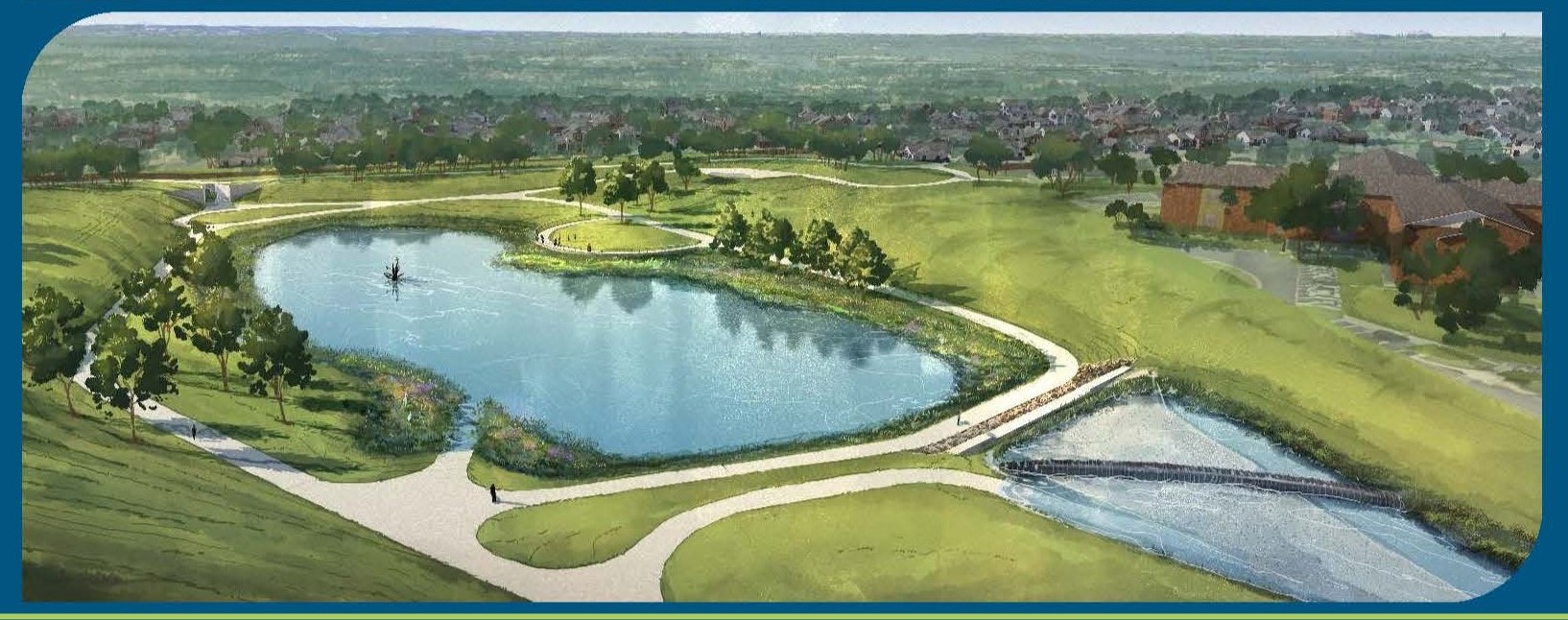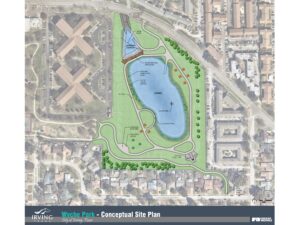Affordable Flood-Proofing and a Bonus Neighborhood Park

To help the City of Irving, Texas, with complicated, expensive improvements to a creek channel prone to urban flooding, the Freese and Nichols Water Resources team first conducted a comprehensive study that identified opportunities for innovations and the possibility of making park, trail and water quality improvements alongside the drainage improvements.
One of the most innovative elements was developing Wyche Park, a shallow, dry detention basin, into a multipurpose neighborhood asset. The team, working with our funding specialists, also helped the city secure $45 million in grants and interest-free loans for the project through the Texas Water Development Board.
The Problem
West Irving Creek, which runs through narrow corridors mostly in south-central residential neighborhoods, was realigned during the area’s original development, but that causes flooding in unexpected areas. When the channel overflows, the excess water tends to follow the creek’s original path through low-lying territory, flooding areas far away, particularly neighborhoods near the upstream end of the channel.
The city had a plan to deepen the channel, using retaining walls for the sides. This would increase the capacity, but the approach involved multiple challenges.
Complicated Logistics:
- Relocating utilities to cross below the channel
- Reconstructing sewers that gravity flow at similar locations and depths as the existing channel
- Rebuilding bridges at each channel crossing
- Protecting private improvements such as homes, detached structures, pools, etc., from damage due to deep excavations
- Removing/replacing private fences, landscaping and irrigation
Cost Hurdles:
- The estimated cost exceeded $100 million — though municipal drainage projects in the region typically cost $1 million-$5 million.
- The city planned to fund construction through debt issued by their Municipal Drainage Utility, but that would require a large fee increase.
- The logical phasing of downstream-to-upstream construction meant the areas with the worst flooding problems wouldn’t be improved for nearly a decade.

Plans to reduce flood risk along an urban creek include turning a dry detention basin into a neighborhood park.
The Solution
The Freese and Nichols team proposed a comprehensive study to reassess the needs, risks, infrastructure conflicts and unknowns. The study included hydraulic modeling, geotechnical investigations, permitting, utility conflicts, temporary and permanent easements, and alternatives analysis. The team also prepared a schematic design of the improvements.
This planning effort produced a better understanding, created more certainty — and allowed the team to develop innovative approaches and turn infrastructure upgrades into multipurpose community assets.
The plan included:
- Converting Wyche Park, a shallow, dry retention basin, into a pond, wetland area and park usable by the public.
- Identifying and diligently pursuing substantial grant funding through the Texas Water Development Board.
The Innovation
Community Enhancement
Wyche Park, located at the upstream end of the project, had limited amenity value as a shallow, dry detention basin. But deepening it would increase the detention benefit enough that the farthest upstream channel phase could be constructed without affecting downstream areas.
The study also envisioned enhancements:
- A wet water pond was imagined as the detention area’s focal point. The pond would incorporate emergent plantings along the perimeter and in a shallow wetland area, which improves water quality through uptake of nutrients and pollutants. Aeration also would help with water quality and aesthetics.
- A large sediment forebay would settle suspended solids along with trash boom and trash rack systems to collect floating debris for maintenance staff to remove.
- Adding trees, trails, lighting and irrigation improvements would make the park a neighborhood amenity.
State Funding
The team helped identify grants from FEMA and Texas’ new Flood Infrastructure Fund (FIF) as possible funding alternatives to MDU debt and fee increases. A FIF grant application was submitted during the study phase, and Freese and Nichols’ funding specialists helped shepherd it through TWDB. In July 2023, the Board announced $45 million in FIF funding for the city: $38.7 million in financing and $6.3 million in grants. By using the FIF program, the city could save about $19 million over the life of the loan, TWDB said.
Design Efficiencies
Conducting the detailed initial study gave the team a clearer plan for the design, which produced a quicker project schedule and reduced the cost. Using custom Civil 3D assemblies for quick and accurate design made coordination of conflicting design elements much easier to communicate between groups, and quantity measurements could be automated instead of done manually.
This project recently won a Horizon Award, a quarterly award at Freese and Nichols given to projects that encapsulate our culture of innovation.